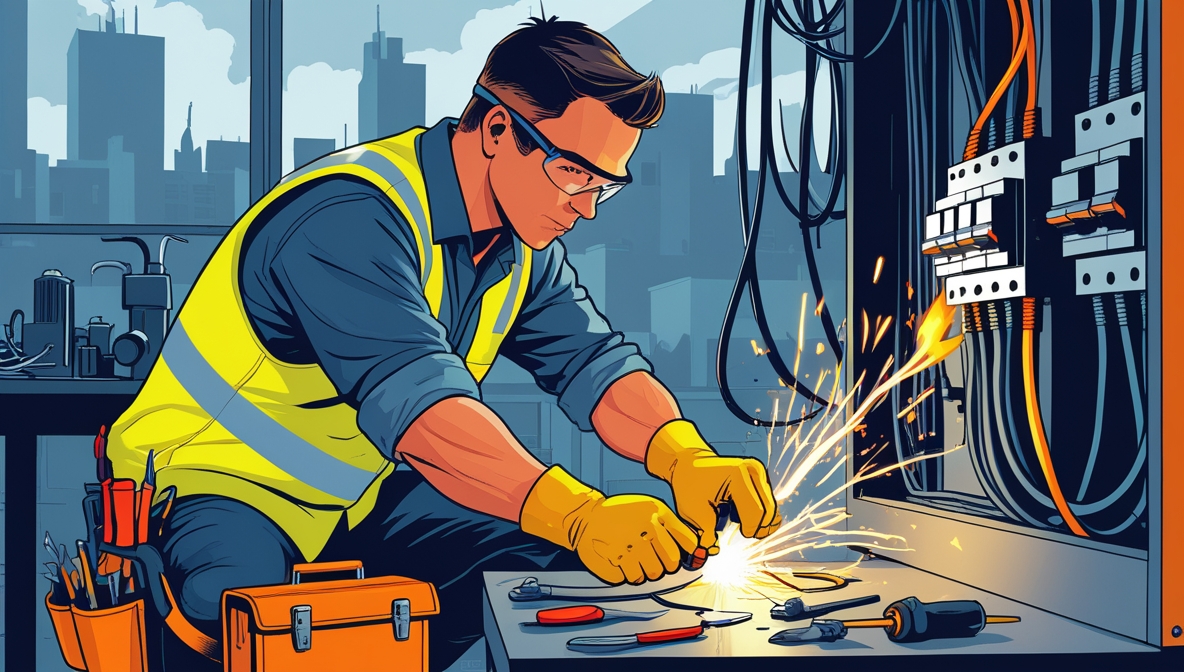Introduction
In the era of curated Instagram interiors and Pinterest-perfect homes, home renovations have taken on a new life. Aesthetics now go hand-in-hand with lifestyle, and more homeowners are opting for trendy lighting fixtures, open-concept layouts, and high-end appliances to elevate their spaces. However, in the pursuit of fashion-forward living, one critical aspect is often overlook electrical safety.
Electrical upgrades can be deceptively complex, and when mishandled, they pose serious risks. From fire hazards to electrocution, the hidden dangers are real. This article explores the potential pitfalls of electrical renovations and provides expert-backed strategies for staying safe while upgrading your living space.
Why Electrical Upgrades Are Popular in Lifestyle-Focused Homes
Modern living is about more than just function; it’s about form and flair. Lighting is used to set ambiance, appliances are seamlessly integrated into cabinetry, and smart home systems make life easier and more stylish. These upgrades are essential for homeowners who want their interiors to reflect personal taste and fashion sensibilities.
In fashion-conscious homes, electrical improvements often include:
- Recessed or accent lighting to highlight architectural features
- Designer pendant lights for kitchen islands
- Integrated smart systems controlling temperature, lighting, and sound
- Additional power outlets hidden in custom cabinetry
While these elements add elegance and convenience, they require careful electrical planning something many overlook in favor of style.
The Hidden Risks Most Homeowners Overlook
Overloaded Circuits
When homeowners add appliances or lighting without evaluating the electrical load, they risk overloading circuits. This can cause overheating, flickering lights, or even electrical fires. Unfortunately, such dangers often remain unnoticed until something goes wrong.
Improper DIY Wiring
The DIY trend is booming, but when it comes to wiring, it's a risky move. Inaccurate connections, loose wires, or improper grounding can compromise an entire system. What may appear to be a money-saving strategy can quickly turn into a safety nightmare.
Incompatible Fixtures
Many fashionable lighting fixtures are imported or designed with different voltage standards. Without proper assessment and adjustments, installing them can result in electrical inefficiencies, short circuits, or equipment damage.
Signs That You May Be Facing Electrical Hazards
Flickering or Dimming Lights
A common sign of electrical stress. It may indicate an overloaded circuit or faulty wiring.
Warm or Discolored Outlets
Outlets that feel hot to the touch or appear discolored should never be ignored. These are early warning signs of electrical faults.
Frequently Tripped Breakers
Circuit breakers that trip regularly point to an underlying issue. It could be an overloaded circuit or even a short that needs urgent attention.
Why You Should Always Work with a Licensed Electrician
Renovations, no matter how minor they appear, can involve complex changes to your home’s electrical infrastructure. That’s why it’s vital to consult a licensed electrician before undertaking any wiring tasks during a style-forward renovation.
Licensed electricians:
- Are trained to adhere to local codes and safety standards
- Provide peace of mind through inspections and warranties
- Carry liability insurance in case of accidents
- Understand the compatibility of high-end appliances and fixtures with existing systems
Their expertise ensures that your stylish home doesn’t come at the expense of safety.
Renovation Safety Checklist for Homeowners
Before the Work Begins
- Obtain proper permits: Skipping this step may result in legal issues and insurance complications.
- Plan the load requirements: Ensure your electrical panel can handle new demands.
- Schedule a professional assessment: Never rely solely on online tutorials.
During Renovation
- Turn off power at the breaker: Avoid working on live circuits.
- Use temporary lighting safely: Ensure any provisional solutions are stable and rated for the intended use.
- Avoid extension cord overuse: These are not substitutes for permanent wiring.
After Work Completion
- Request a final inspection: A second opinion ensures everything is up to code.
- Document all changes: Keep a record of permits, inspections, and schematics.
- Schedule regular maintenance: Plan annual checkups to maintain safety.
Integrating Safety with Style It’s Possible
Homeowners don’t have to choose between style and safety. In fact, they can complement each other. By working with professionals and planning carefully, you can install chic lighting, hidden outlets, and integrated home systems without compromising safety.
For example:
- LED strip lights can be installed safely with the right transformer
- Motion-sensor fixtures reduce energy waste and are easy to wire professionally
- Custom outlets with USB ports can be built into vanities, desks, and bedside tables
A fashionable home should be functional and secure.
Conclusion
Stylish renovations add significant value to a home, but the appeal should never override safety. Electrical upgrades come with hidden dangers that can compromise not only your investment but also your family’s wellbeing.
From overloaded circuits to improperly installed designer lighting, the risks are real. That’s why it’s essential to partner with a licensed electrician when upgrading your home. With expert support, you can enjoy a beautiful, high-functioning space that’s as safe as it is stylish.
Fashion meets functionality and when done right, both can shine.





Comments